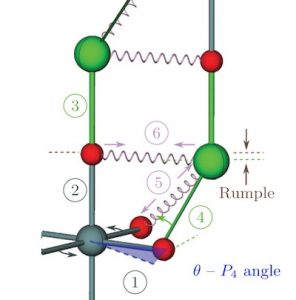C. Ablitt, S. Craddock, M. S. Senn, A. A. Mostofi and N. C. Bristowe, The origin of uniaxial negative thermal expansion in layered perovskites,
Nature Computational Materials 3, 44 (2017)
Most materials expand when they are heated, but some do the opposite and shrink, a phenomenon known as negative thermal expansion (NTE). One particular puzzle has been: why is it that ABO3 perovskite materials generally do not exhibit uniaxial negative thermal expansion (NTE) over a wide temperature range, whereas layered perovskite materials of the same chemical family, e.g., A2BO4, often do? In this work, which appears in Nature Computational Materials, PhD student Chris Ablitt has answered this question. Using first principles calculations and symmetry analysis, he has shown that whilst ABO3 perovskites and layered perovskites both have the sort of soft vibrational modes that are needed for NTE, it is only the layered perovskites that additionally have large elastic anisotropy that predispose the material to the deformations associated with NTE. Chris has shown that this elastic anisotropy arises from the combined effect of layering and condensed rotations of oxygen octahedra and it is this feature, unique to layered perovskites of certain symmetry, that allows uniaxial NTE to persist over a large temperature range. This fundamental insight means that symmetry and the elastic tensor can be used as descriptors in high-throughput screening and to direct materials design.
This work forms part of Chris Ablitt‘s PhD in the Centre for Doctoral Training in Theory and Simulation of Materials. Chris is supervised by Nicholas Bristowe, Mark Senn and Arash Mostofi.
